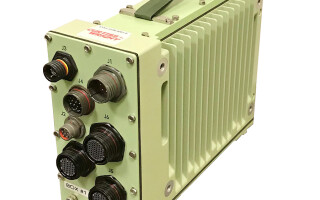Understanding GCIA: A paradigm shift for establishing an overall ground-combat vehicle architecture
StoryFebruary 16, 2023

The U.S. Army has long pursued a standardized infrastructure and architecture for ground-combat vehicle hardware and networking. While the VICTORY [Vehicular Integration for C4ISR/EW Interoperability] standard helped make some progress and created some excitement, the need to converge on a more focused solution set soon became apparent. That reality resulted in hardware/software convergence which explored what such a solution set might look like, such as standardizing on 3U OpenVPX, as a way of driving a modular enough solution that could have a significant impact on interoperability. The next step was CMOSS [Command, Control, Communications, Computers, Cyber, Intelligence, Surveillance, Reconnaissance (C5ISR)/Electronic Warfare Modular Open Suite of Standards], which – in its effort to define the suite of standards for building the desired infrastructure and network – embraced the VICTORY, MORA [Modular Open RF Architecture], and OpenVPX standards.
When the SOSA [Sensor Open Systems Architecture] Technical Standard effort began, it focused initially on airborne sensor systems. While it makes use of many of the same standards as the CMOSS standards, such as OpenVPX, it became clear that these standards didn’t go far enough to satisfy the Army’s vision for combat vehicles. The Army has developed two new standards – the PEO [Program Executive Office] Aviation and PEO [Ground Combat Systems) GCS’s CMFF (CMOSS Mounted Form Factor) and the PEO GCS’s GCS Common Infrastructure Architecture (GCIA) – to define a detailed and comprehensive architecture for the desired interoperability, adaptability, and technology movement.
While CMFF focuses on the C4ISR piece of the vehicle infrastructure (communications and mission management), GCIA focuses on the requirements to enable a core compute networked infrastructure that will enable a system designer to simply “plug in” all the desired capabilities. Most importantly, GCIA is concerned with how the network moves and shares data to support all the resources needed to host the different functions on a ground-combat vehicle. For example, GCIA defines a version of Ethernet that supports TSN (time-sensitive network) standards for safety-critical data movement on the standard core network. In addition, GCIA directs the use of Intel hardware and Linux software and defines the types of displays (dumb vs. smart), security (multilevel security boxes vs. single-level boxes).
While GCIA looks to SOSA for system profile definitions and VITA hardware standards, it limits the approved use to only a handful of SOSA profiles and narrow subset of hardware standards. This stricture forces designers to build from a much smaller set of building blocks from the beginning in order to deliver the benefits of greatly reduced time to field new technology and tech refreshes for ground combat vehicles that GCIA promises. New functions often arrive in their own boxes that host their own computers and need space on an already crowded vehicle. Each box also has its own software that must be qualified and communicate with the next layer of software on the vehicle network: All of this adds time and program risk.
The GCIA network can accommodate very-low-latency paths while providing determinism. System designers can use the specified building blocks and develop their software on the very same hardware platform that all other GCIA-compliant suppliers are using; GCIA defines the internal vehicle network (IVN). Capabilities can be hosted anywhere on the platform because all of the resources will be networked, so solutions developed for GCIA-based applications will be transportable between different hardware elements, not just within the platform, but platform to platform, from compute instance to compute instance. The ability to move applications and functions, using distributed network resources, to any spot in the vehicle will provide an unprecedented new level of fault resiliency compared to today’s vehicle architectures, where there is very little redundancy built in.
Going forward, ground-combat vehicle solutions will need to support GCIA, which has the needed specificity while leveraging SOSA and CMOSS. GCIA’s complete hardware and software ecosystem definition represents a paradigm shift on how to establish a vehicle architecture by defining an overall integrated solution. Curtiss-Wright’s next generation of modules, from switches to processors to payload and special-function cards, will all support TSN and GCIA and will implement the IPMI solutions for system and chassis management to make it easy to use all of the highly configurable resources on the network. (Figure 1.)

[Figure 1 | Examples of GCIA Common Compute solutions include the 1/3 SAVE starter kit (shown), 1/2 SAVE enclosure, and full SAVE enclosure.]
Jacob Sealander is Chief Architect, C5ISR Systems, for Curtiss-Wright Defense Solutions.
Curtiss-Wright Defense Solutions https://www.curtisswrightds.com/







